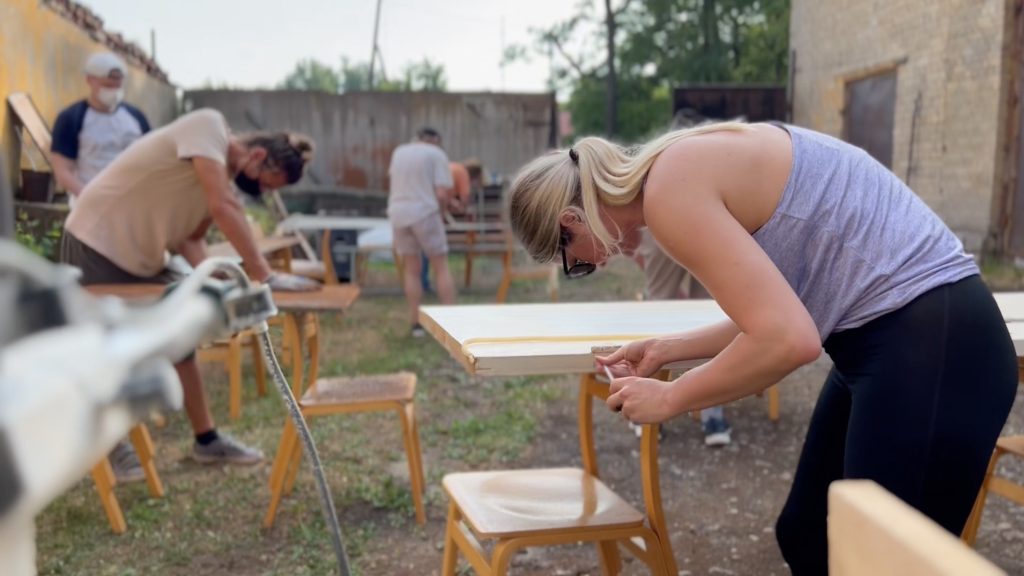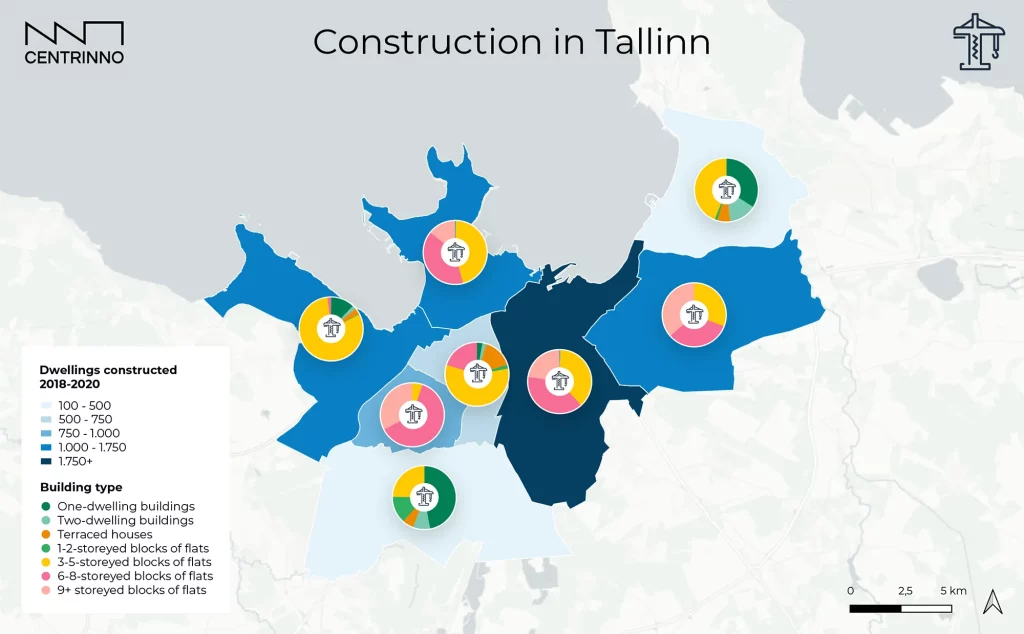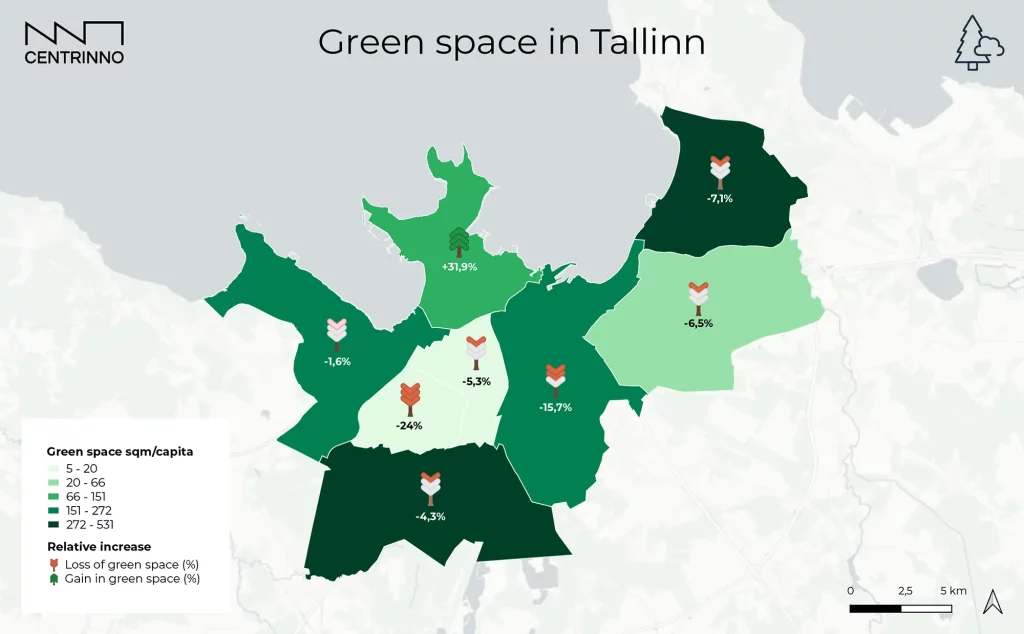BLOG
Building a bottom-up community around circularity
Building a bottom-up community around circularity
Building a bottom-up community around circularity
Kopli 93 – Cultivating Circular Lifestyles
Words by Metabolic & TalTech
ABOUT THE PILOT AREA
Pilot area: Kopli
Kopli 93 has a long history as a community and cultural centre for the neighbourhood of Kopli in Tallinn’s northern industrial district. The CENTRINNO pilot team works hard on creating a commuity gathering place that spreads knowledge, skills and above all excitement around sustainable and circular lifestyles. To support Kopli 93 in their mission, our Cartography of Kopli focussed on mapping expertise and knowledge resources around two themes: Circular food systems and sustainable buildings. Our goal is it to create a Circular Ecosystem Map accessible to the community to highlight that circularity is nothing new but instead deeply rooted in the existing cultures, landscapes and practices.
How can Kopli 93 support Tallinn’s green transformation by 2035?
Tallinn. Green and global. A city that values its heritage, whilst looking towards a greener future. A city that is on its way to become a global trailblazer for green transformation, social wellbeing and innovation. Tallinn’s newly published city strategy sets out to become carbon neutral by 2050, create a biodiverse and blossoming urban nature, provide a fertile ground for green innovation and, of course, strengthen a local circular economy – a term that is novelty for so many, despite the deeply rooted values of resourcefulness and reuse that were once common nature in Estonia’s society.
Figure 1. The Tallinn Green and Global focus points. Source: City of Tallinn
Without doubt, Tallinn’s development strategy will impact Kopli’s community, economic structure and ecology. New houses are built alongside industrial heritage, the local community will become more international and diverse, and new business districts change a former industrial area into a mixed “creative hub”. What does that mean for the future of Kopli and its residents?
Map 1. The construction of Dwellings in Tallinn, 2018-2020. Source: CENTRINNO
How can we ensure Tallinn’s vision benefits all and is adopted by all? After all, many of Tallinn’s goals hinge upon the contribution of local citizens and businesses.
For example, to become circular, Tallinn counts on businesses to adopt circular designs and production methods. Citizens are asked to reuse materials, recycle their waste and refrain from unnecessary consumption of goods. Lacking awareness amongst the people regarding potentials and needs for a circular economy is often cited as a barrier to become circular.
Also Tallinn’s goal to halt the worrisome trends of diminishing high-quality and biodiverse green spaces calls for higher awareness and education around the benefits to retain backyard and front yard gardens instead of converting them into parking lots.
Map 2. Greenspace availability and relative change across Tallinn. Source: CENTRINNO
As a community hub, Kopli 93 plays a key role to ensure local residents take ownership for and contribute to the goals set by the city. Focussing on Tallinn’s goals of a circular economy and a thriving urban nature, we show how locally available skills, natural resources and waste streams can be leveraged within Kopli 93 to help build circular skills and knowledge, whilst connecting the community. Explore our maps how existing programs and future opportunities for Kopli 93 help address and educate the area’s environmental problems and potential solutions.
Kopli 93 – Cultivating circular and green transformation
Our story so far
Kopli 93 has used every opportunity to connect experts, locally underused resources and residents to raise awareness and build skills about materials reuse, recycling and refurbishment.
From restoration workshops of old woodworking tools and reclaimed building materials, to the use of locally harvested reeds to create insect hotels. Kopli 93 has managed to get their community hub up and running, using mostly reclaimed resources and the collective power of experts and citizens of the area.
Explore resource recovery activities at Kopli 93

Kopli 93 has used every opportunity to connect experts, locally underused resource and residents to raise awareness and build skills about materials reuse, recycling and refurbishment. Check out the interactive map here.
What is next? Mapping circular opportunities around Kopli
How can Kopli build on these first initiatives to become more circular and also provide solutions to local regeneration challenges? During the last sprint, Metabolic and the CENTRINNO team have joined forces to map the local ecological conditions to identify how to bring together local skills and resources even better.
1. Building Food-Soil Web
A community that feeds its soils to grow food that feeds the community.. This is one of the central visions of Kopli 93. We mapped a few first ideas of how Kopli 93 can use local resources to close food waste cycles and regenerate local soils.
2. Cob, reed and mud – reviving old building techniques for modern times
?In the past, Kopli’s clay deposits were mined for the manufacturing of bricks and pipes for the construction industry. Roofs were clad with reeds harvested from around Estonia’s coasts. Today, the large volume of materials needed for Tallinn’s transformation is most likely imported steel and cement with a significant carbon footprint. Kopli 93 has already an extensive network of experts, researchers and practitioners with skills, services and knowledge around sustainable construction.
3. Cultivating circular skills in Northern Tallinn and beyond
We want to empower our community’s self-organization towards circularity. So many skills, expertise and exciting ideas already exist in Kopli. As Kopli 93 grows, we hope to grow a map of all these skills to help the team identify new opportunities and help the community to self-organize. Our map of skills and expertise you see below is just in its infancy and many more circularity experts will populate this map during the next months – so stay tuned!
Next steps
In the next CENTRINNO sprint the goal is to involve stakeholders and community into mutual experiments on soil production from local biowaste.
There is continuous work being done on raising awareness and teaching skills for local production using mainly local and reused materials. One of the main materials we are working with is wood and wood waste. Kopli 93 hosts weekly working collectives, open doors events and workshops to achieve this goal.
One of the highlights of the end of 2022 is a wind turbine workshop. With the help of a practitioner and scientist from Greece representing an association called Wind Empowerment, the local activist community formed of local citizens and key stakeholders builds their very own wind turbine from simple materials to produce local electricity at Kopli 93. The goal is to train the trainers. To train the people who are going to keep the skill alive here in Kopli. The participants include community members, vocational school teachers, and local entrepreneurs.
Further experimentations will take place on the topic of food production using inspiration from the past. The past generations have inherited us traditional and effective ways to preserve and cook food. The community of Kopli 93 is on a mission to learn from the past to create a better and more sustainable food culture in Kopli. The community has members who still remember traditional techniques and are going to teach it to others. Additionally, there is a plan to organise further training introducing everything else that traditions might not carry.
Check out the article with the interactive maps here!


































































































